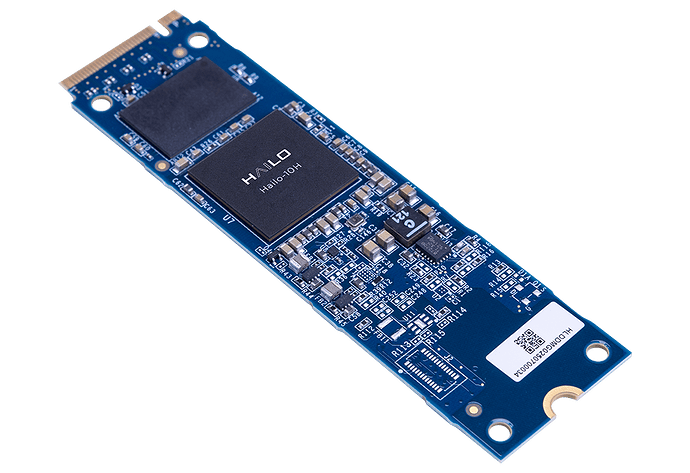How can I connect a Hailo-10H to my PC or laptop?
The Hailo-10 is connected to a host via the PCIe interface. USB3 and Ethernet are available on the chip. However they are not connected on the M.2 module. There are several options available to connect a Hailo-10H to a PC, IPC or laptop.
Hailo-10 M.2 module
Many modern motherboards have M.2 connectors. The Hailo-10H M.2 module uses the M.2 key M with 4 PCIe lanes. When available, use the motherboard’s built-in M.2 heatsink; otherwise, attach your own cooling solution.
PCIe adapters
If no M.2 slot is available a PCIe to M.2 adapter can be used with standard PCIe slots available in many desktop and IPC systems. The adapters are widely available e.g. on Amazon and cost around USD/EURO 10-20.
Thunderbolt NVME adapter
Some laptops and few desktop motherboards support Thunderbolt. Thunderbolt uses the USB-C connector but combines PCIe and Display Port protocol. The connector is usually marked with a lightning bolt.
When a Thunderbolt port is available a Thunderbolt NVME adapter can be used. These are available at Amazon from different companies like Orico and Other World Computing (OWC). It is important to study the information carefully because there are many similar adapters for USB (will not work). Thunderbolt adapters are more expensive, usually above USD/EURO 100.
When the adapter comes with multiple cables you must use the one suitable for Thunderbolt. They are short and often thick because of the shielding required, have two USB-C type connectors and often a lightning bolt or 40Gbps sign. Using a USB type A port or adapter will not work. Also normal USB-C cables e.g. shipped with mobile phones do not work.
Here are posts about a few Thunderbolt SSD enclosures I have tested:
Orico M2V01-C4 M.2 SSD Enclosure for Hailo-8 and Hailo-10
Orico M234C3-U4 M.2 SSD Enclosure for Hailo-8 and Hailo-10
UGREEN USB4 M.2 NVME SSD Enclosure for Hailo-8 and Hailo-10
Installation
It is recommended to test your system before installing the HailoRT PCIe driver. PCIe capabilities of all devices are negotiated at boot without the need of custom drivers. You should be able to see the Hailo-10 when running lspci on Linux.
Linux lspci command
3b:00.0 Co-processor: Hailo Technologies Ltd. Device 45c4 (rev 01)





